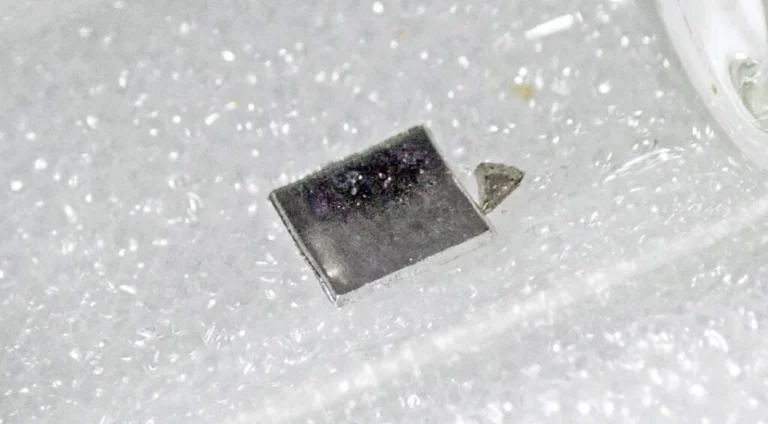Accurate determination of volatile content is a cornerstone of analytical chemistry in precious metals. Loss on ignition is central to this process, as it corrects for mass changes caused by moisture, carbon, and organics.
Without it, assay results risk misrepresentation, leading to financial and technical errors. This article explains what LOI is, what it measures, and why Ledoux & Co. integrates it into our rigorous assay practices.
What Is Loss on Ignition (LOI)?
Below, we explore what LOI means and typical LOI conditions & protocols in metal analysis.
Definition
LOI measures the weight loss of a sample when heated at high temperature until volatile components are removed. It is expressed as the percentage of mass lost relative to the initial (often dry) mass.
This test helps distinguish between stable material and volatile matter that alters the perceived composition.
In practice, it provides analysts with a reliable way to identify how much of a sample’s weight can be attributed to moisture, organics, or carbonates that will not persist under ignition conditions.
Typical LOI Conditions & Protocols
Accurate loss on ignition testing requires strict adherence to controlled laboratory conditions. Any deviation in procedure could yield misleading results.

Standard practices typically involve the following:
- Temperature ranges: Approximately 550 °C is used in many protocols to burn off organics and moisture, but carbonates or refractory matrices and some materials need even more temperature (up to 900–1000 °C).
- Heating stages and durations: Samples are usually pre-dried to remove surface moisture, ignited until mass stabilizes, cooled, and reweighed. The process is repeated until a constant mass is confirmed.
- Specialized equipment: Muffle furnaces maintain consistent, high heat. Ceramic, platinum, or quartz crucibles are non-reactive and heat-resistant to the sample. Controlled atmospheres (air, oxygen-rich, or inert gases) can be selected based on material response.
- Cooling & contamination control: Desiccators cool the samples after ignition to avoid reabsorption of water from the atmosphere. Careful handling avoids the contamination that can influence the results.
Through standardizing all these procedures, laboratories ensure comparability and repeatability across different test runs and samples.
What Does LOI Measure?
LOI accounts for multiple types of volatile losses, each of which has implications for assay accuracy.
Volatile Components
The most common volatile components found by LOI are:
- Moisture: Water in several forms, free surface water, absorbed water, or crystallization water in mineral lattices.
- Organic matter: Combustible substances such as hydrocarbons, organic binder, or carbonaceous residue that burn and oxidize.
- Carbonates and CO₂: Heat decomposes carbonate minerals with volatilization of carbon dioxide, accountable for measurable weight loss.
These volatile materials complicate the accurate determination of sample mass. By removing them through ignition, analysts establish a reliable “dry” basis for subsequent testing.
Inorganics & Other Losses
Aside from organics and water, inorganic substances also register loss on ignition values.
Halides, hydrates, and certain sulfates volatilize or decompose under specific thermal conditions and provide detectable mass changes.
Catalyst and metal oxidation or reduction in very rare cases result in mass gain or loss. Recognizing and accounting for these reactions is critical in interpreting LOI data correctly.
The Importance of Accurate Assaying in Precious Metals
Accuracy is not an option for the precious metals industry, it’s the basis for fair valuation, trade, and compliance.
Financial & Valuation Implications
Unaccounted volatiles bias weight measurement, reporting precious metal content higher than reality. This inaccuracy may lead to overpayment, mispricing, or contention between buyers, sellers, and refiners. Contracts and returns depend on knowing the true volatile-free weight.
Effect on Analytical Methods
Most assay methods assume a dry, volatile-free basis.
Without LOI correction, methods like fire assay, ICP, or XRF may deliver misleading results. Sample preparation or volatile distribution variability amplifies error, reducing reliability.
Regulatory, Compliance & Quality Assurance
Operations like catalyst production and recycling involve strict specifications that require LOI data.
Clients expect transparent assay reporting, including sample condition, LOI corrections, and detection limits. Proper LOI practice supports both compliance and customer confidence.
Reproducibility & Trust
Consistent LOI reporting demonstrates methodological rigor. Accredited labs that ensure constant mass, controlled procedures, and documentation provide clients with reproducible, defensible results.
Trust in assay reports stems from confidence that volatile matter is accounted for, preventing inflated values.
What Ledoux & Co. Offers for Our Precious Metal Assay
Ledoux & Co. integrates loss on ignition testing into its comprehensive suite of analytical services. Our long-standing expertise ensures accurate and reliable assay results.

Our LOI / Volatiles Analysis in Assay Work
As part of our precious metals testing services, we offer full loss on ignition analysis where relevant. Regardless of whether the issue is moisture, organics, or carbonate decomposition, our procedures can accurately measure volatile mass.
We apply calibrated muffle furnaces, specialized crucibles, and controlled atmospheres to carry out rigorous constant-mass procedures to achieve reliable and reproducible results every time.
Accreditation & Quality Systems
Ledoux & Co. is ISO 17025 accredited, a technical competence stamp, and ISO 9001:2015 certified, an indicator of our rigorous quality management systems. These two standards guarantee that LOI data we deliver meets the highest level of accuracy and compliance.
Transparent Reporting & Method Selection
Every LOI analysis we perform is thoroughly documented. We specify ignition temperatures, heat times, atmosphere conditions, and whether results are reported on a volatile-free or dry basis. Our final reports include detection limits, uncertainties, and other quality parameters. This transparency keeps clients completely informed of how LOI impacts their material valuation.
Supporting Clients in Sample Prep & Interpretation
Our support extends beyond testing. We guide clients through best practice steps, such as drying, grinding, and contamination prevention on sample handling. Once results are available, our technical experts provide interpretation: whether high loss on ignition indicates excessive organics or carbonates, and how such results might affect refining operations, product quality, or financial valuation.
Turnaround, Reliability & Trust
With more than a century of operational history, we are uniquely positioned to deliver reliable, timely results. Our LOI-inclusive assays are trusted in contracts, financial negotiations, and compliance documentation worldwide. Clients who choose Ledoux & Co. benefit from both speed and credibility, knowing that their data is defensible under scrutiny.
Choosing the Right Assay Partner with Ledoux

At Ledoux & Co., we deliver more than just raw analytical numbers, we provide trust and assurance through accredited, reproducible science.
Our loss on ignition testing is conducted via ISO 17025-accredited techniques and backed by a quality management system created to safeguard client interests.
Contact us today to discuss your assay needs, request a tailored quote, or schedule a sample submission.






